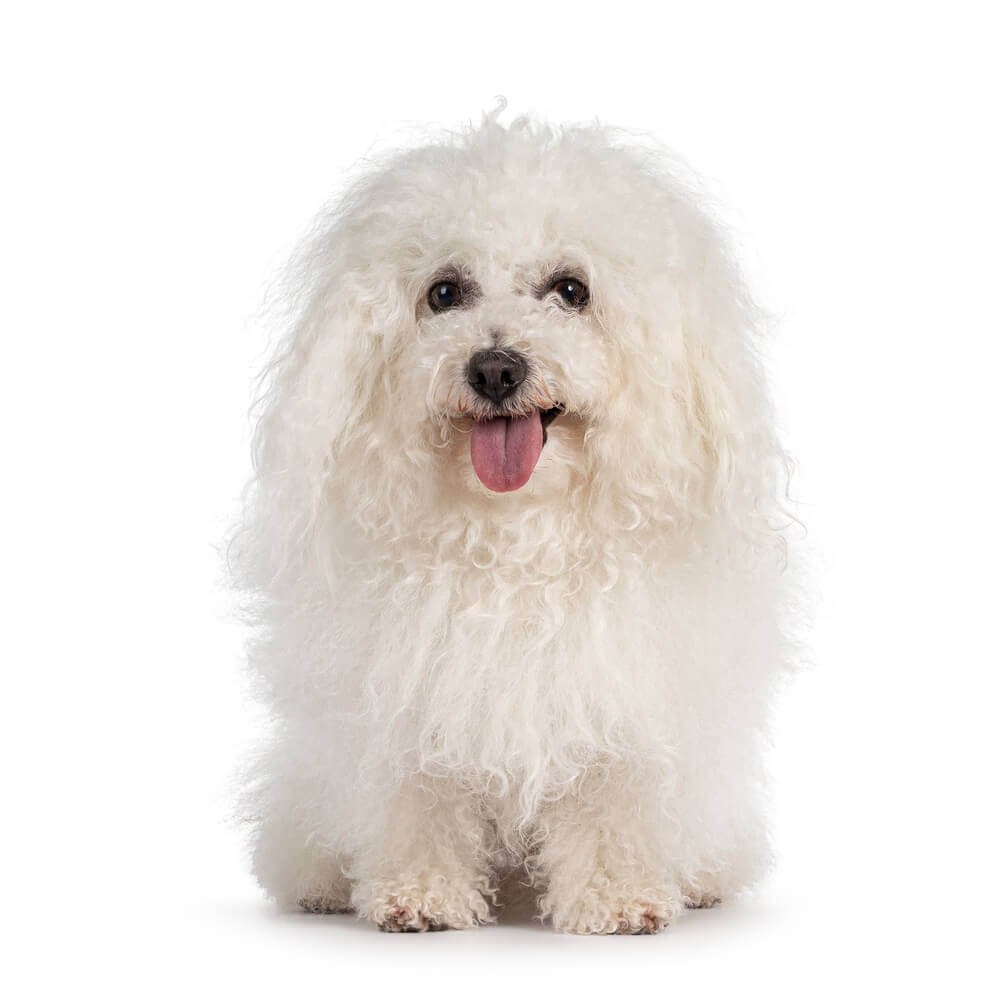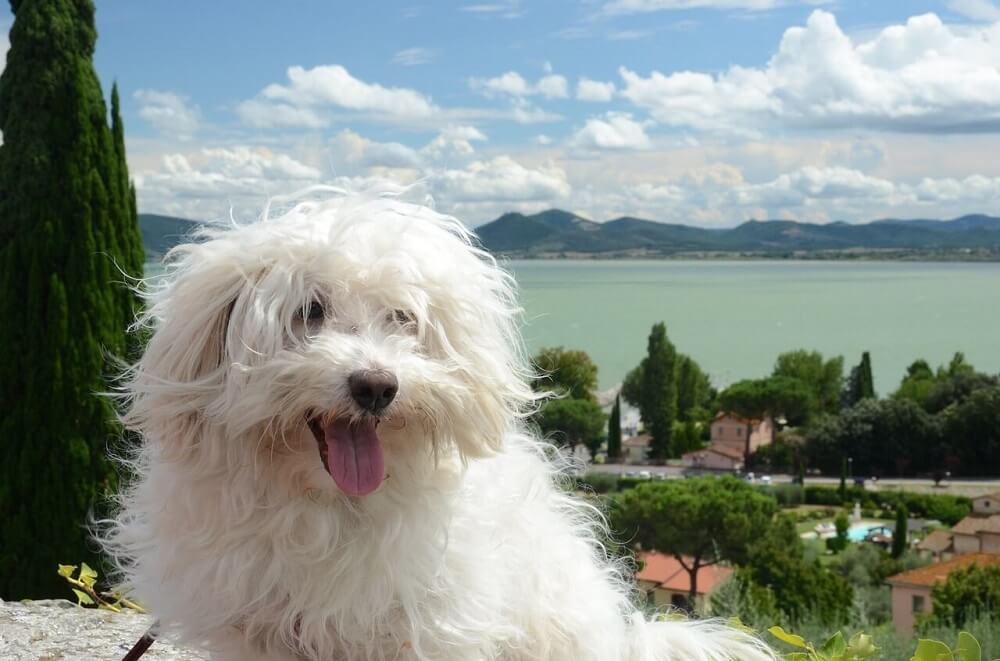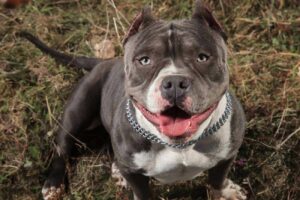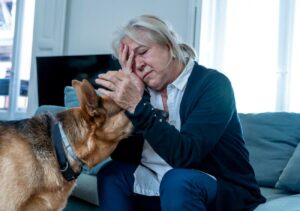If you suffer from pet allergies, you're not alone! Even though the majority of people suffer from some form of allergies be it food, plant or pets, they can generally find a way to enjoy their lives including having furry loved ones.
The Bolognese, pronounced (BOHL-oh-nays) is a small dog with a long, curled and fluffy white coat, with their first origins in Italy. Also called the Bichon Bolognese and the Bottoli, the Bolognese is one of the most popular hypoallergenic dog breeds.
Here’s why the Bolognese is a great hypoallergenic breed and how can you minimize having allergic reactions by simply making a few small lifestyle changes.
Is a Bolognese Dog 100% Hypoallergenic?
There is no such thing as a 100% hypoallergenic dog - purebred or mixed breed!
All breeds carry a certain amount of allergens, but hypoallergenic breeds carry less.
With proper grooming and an enriched diet, Bolognese dogs can be regarded as hypoallergenic. It doesn’t mean that they are completely without allergens, but that they are less likely to cause allergic reactions with their care.
The Bolognese dog is a top companion dog, and great with families and other dogs. This breed is also well suited for beginners. Thanks to their fur and build, they do not shed as much fur (or dander) as comparative dog breeds but it's coat still has to be well cared for.
Bolognese dogs are mostly hypoallergenic thanks to:
1. Their Size
Smaller dogs are considered hypoallergenic for several reasons.
- Smaller dogs have shorter hair or have hair that is long and thin and this type of hair causes less problems and sheds less often as other breeds.
- Less dander is produced since smaller dogs don't shed as often.
- The majority of small dog breeds don't product a lot of saliva.
- Smaller breeds can't climb onto the couch, bed or other furnishings so that's less allergens to deal with.
- Smaller breeds prefer their own space, they're comfortable to sleep on on their own in their own bed or crate.
Small dogs like the Bolognese and it's close cousin the Bichon Frise, are wonderful companions to those who suffer from allergies.
2. Their Fur
The Bolognese dog breed is best described as fluffy, with a curly medium-haired coat that is similar to other toy dog breeds. The Bolognese has a non-shedding, flocked coat.
With proper care, Bolognese dog owners can have much less of an allergic reaction around their pet if they have had issues with other dog breeds that are known to trap heavy allergens in their coats.
Compared to hairier dog breeds with much more hair density (or a fluffier, warmer coat), the Bolognese is a great hypoallergenic dog.
3. Their Shed
The Bolognese was developed during the Roman Era, and it’s by no means a modern breed.
Thanks to where they come from, the Bolognese dog doesn’t shed as much fur as other dog breeds. Routine shedding can be expected twice a year, during which their bath and grooming time might need to be more frequent.
Because they don’t shed as much, the Bolognese won’t leave fur trapped in curtains, carpets or cushions.
Other, fluffier dog breeds by comparison can shed much more, up to four times a year!
4. Their Grooming Routine
Bolognese dogs require a moderate grooming routine, though not as much grooming as Poodles or Saint Bernards. If you have a Bolognese in the home regular grooming is necessary to keep it looking tidy and keep allergens at bay.
The Bolognese should be brushed at least 1 to 2 times per week – and bathed at least once per month for the best results.
In warmer temperatures, expect to increase the amount of times your Bolognese could need a bath.
Just before seasons change to warmer ones, brush them more regularly.
5. Their Skin
A Bolognese toy has a much less chance of developing skin conditions (e.g. dry skin) than most “allergenic” dog breeds. In part, it has a lot to do with their glands and skin type.
Bolognese dogs won’t produce as much oil through their skin, and won’t be as likely to trigger allergies for the sensitive person.
Thanks to their skin, much less of their dander and skin cells are left around the place.
With the right diet and grooming routine, Bolognese dogs are almost entirely hypoallergenic.
Tips For Living with a Bolognese Dog If You Have Dog Allergies

The Bolognese is an intelligent, teachable and willing to please dog.
Even the most hypoallergenic dog breed at its cleanest can still trigger dog allergies for sensitive people. If you are allergen-sensitive or have someone in the family who is, there are ways to make life around your Bolognese dog easier.
People who are allergen-sensitive should brush and bathe their Bolognese dogs more often.
Hypoallergenic dog breeds like the hairless Chinese Crested Dog and Bolognese still trap allergens in their fur and skin, just much less than “allergenic” dog breeds like the Black Lab.
One more tip: with allergies, always carry antihistamines around the house even if you take the utmost care of your dog and their fur! In the event of an allergic reaction to your pet, you will always have something in the house for it.
Here’s how to live in harmony with your Bolognese' yearly fluff.
Regular Brushing
Regular brushing (at least 1 – 2 times per week) is enough to keep your Bolognese dog’s coat in excellent condition. Coat care makes a huge difference when you are trying to counter allergens, of which loose and trapped fur is a huge part of it.
For the best allergy-avoiding results, brush your pet outside as opposed to inside the home where fur can fly through the air.
If you notice that your Bolognese is shedding more hair, just brush their coat through a little more frequently.
Bathe Your Dog At Least Once (Or More) a Month
Bathe your Bolognese at least once (or more) per month, and make sure you use a high-quality shampoo specific to the breed.
Not only will a good coat treatment bring back the ideal shine to their coat, it also makes shedding, dry hair and trapped allergens a thing of the past.
If you notice a heightened allergic reaction to your pet, increase the bathing time to a little more frequently and proceed on to the next step.
Use the right shampoo naturally made with oatmeal.
Vacuum Using a HEPA filter Pet Vacuum
Hypoallergenic doesn’t mean completely allergy-free.
Bolognese dogs still leave a fair amount of shed cells and hair around the house, especially as they play and sleep. Humans do the same.
Those sensitive to allergies will react much quicker to trapped fur, dander and other allergens that remain around the house even after you have cleaned your dog.
Regular vacuums perform well with dust, but can still leave lot of allergens behind if you have pets around the house. Get a HEPA Filter Pet Vacuum for the best, cleanest results around allergy-sensitive people and dogs.
Keep Your Dog Off Your Furniture
Dogs and furniture is a battle that almost every pet owner has with their dog.
When dogs jump up and down from the couch or bed, they leave a lot of their shed and dander behind. Even though some pet owners don’t think this is a problem, it’s one of the main allergy-causing things associated with pets.
If you keep your dog off your furniture, you have a smaller chance of coming into contact with the most common allergens that come off your pet.
No, it’s not difficult to keep your dog off furniture: behavioral training is the best bet.
Groom Your Dog Outside
The whole point of grooming your dog is to banish loose fur, hair and allergens and to get all of this off your dog… But have you ever thought where the allergens go once you have gotten them to separate with your dog?
For the best results around allergy-sensitive people, don’t groom your dog inside the house.
Outside grooming makes things easier for people who are more likely to be affected by allergens, and it keeps the fur and dander where you prefer it: not inside your house!




